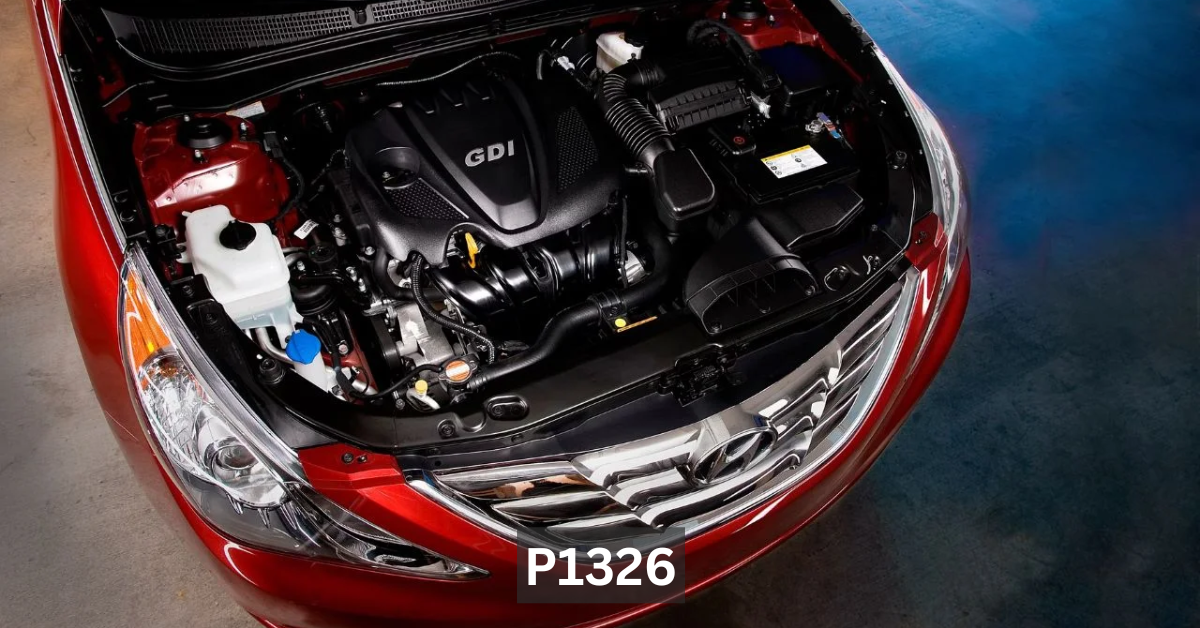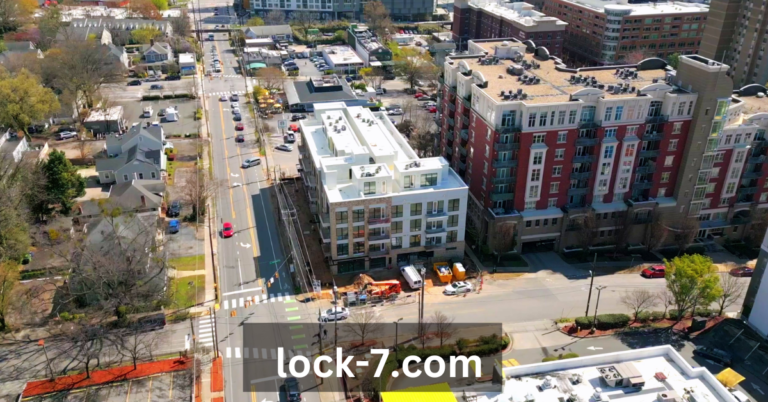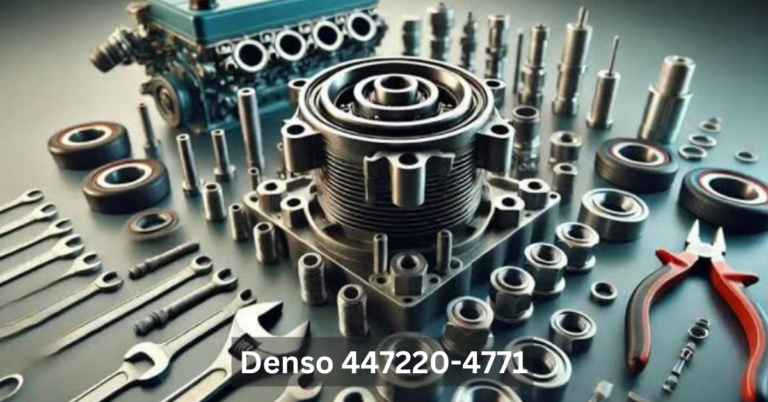P1326: The Ultimate Guide for Kia and Hyundai Owners
The P1326 diagnostic trouble code (DTC) often triggers a sense of urgency among Kia and Hyundai owners. This comprehensive guide will delve into every aspect of the P1326 code, its implications, and actionable solutions to keep your vehicle in top shape.
What is the P1326 Code?
The P1326 code is specific to Kia and Hyundai vehicles, signaling an issue within the Knock Sensor Detection System (KSDS). This system plays a crucial role in monitoring engine vibrations to detect and prevent damage caused by abnormal knocking.
The KSDS ensures optimal engine performance by detecting any detonation or pre-ignition issues. It protects the engine from potential harm, maintaining efficiency and longevity.
Symptoms of the P1326 Code
The most immediate indication of the p1326 Hyundai code is the Malfunction Indicator Lamp (MIL) lighting up on your dashboard. This warning signifies the need for diagnostic attention.
When triggered, the vehicle may enter limp mode, a safety mechanism designed to limit engine power and speed, preventing further damage. While this restricts performance, it is a critical measure to protect the engine.
Drivers may notice a significant loss of power, affecting acceleration and overall performance. In severe cases, unusual noises or vibrations might also be evident.
Causes of the P1326 Code
A common cause of the p1326 Kia code is a malfunctioning knock sensor. This sensor’s failure can lead to incorrect readings, triggering the code.
Wiring Issues
Damaged or loose wiring between the knock sensor and the Engine Control Module (ECM) can disrupt communication, resulting in the P1326 code.
ECM Software Problems
Occasionally, the issue might stem from outdated or faulty ECM software. Updating the software can resolve miscommunication and prevent recurrence.
Engine Mechanical Failures
In rare cases, mechanical failures such as connecting rod bearing wear can also trigger the code, requiring more extensive repairs.
Severity of the P1326 Code
While the vehicle might remain drivable, addressing the p1326 hyundai sonata code promptly is essential to avoid escalating issues. Neglecting this code can lead to engine failure symptoms and more costly repairs.
Ignoring the P1326 code can exacerbate engine damage, increase fuel consumption, and degrade performance. In extreme cases, it might necessitate a complete engine replacement.
Diagnosing the P1326 Code
An OBD2 scanner is crucial for diagnosing the P1326 code. Advanced diagnostic tools like a multimeter may also be needed for in-depth analysis.
Step-by-Step Diagnostic Process
- Connect the OBD2 Scanner: Plug it into the vehicle’s diagnostic port to retrieve the P1326 code.
- Inspect the Knock Sensor: Check for any signs of damage or corrosion.
- Examine Wiring and Connections: Ensure all connections are secure and undamaged.
- Test the ECM: Verify its functionality and update the software if necessary.
Common Mistakes to Avoid During Diagnosis
Avoid overlooking simple issues like loose connections or neglecting to test the ECM thoroughly. Misdiagnosing the problem can lead to unnecessary repairs.
How to Fix the P1326 Code
For those comfortable with DIY repairs, replacing the knock sensor is often a straightforward solution. Ensure you follow a reliable guide or consult the vehicle’s repair manual.
Professional Repair Options
Complex issues, especially those involving extensive wiring repairs or ECM malfunctions, are best handled by certified mechanics. Their expertise ensures accurate diagnosis and effective repairs.
Cost Considerations
Repair costs for the P1326 code vary. A knock sensor replacement typically ranges from $150 to $400, while ECM-related repairs might be more expensive.
Preventative Measures
Routine inspections and timely maintenance can prevent issues from escalating. Pay attention to unusual noises, vibrations, or performance dips.
Regularly updating the ECM software ensures optimal communication between the knock sensor and the engine management system, reducing the risk of false alarms.
Responding promptly to any warning signs, such as the check engine light, can prevent more severe issues and extend your vehicle’s lifespan.
Real-Life Case Studies
Many Kia and Hyundai owners have successfully tackled the P1326 code. For instance, one Kia Optima owner resolved the issue by replacing a faulty knock sensor after a quick diagnostic scan.
Some drivers have faced challenges like extensive wiring repairs. Learning from these experiences emphasizes the importance of professional help when needed.
Resources and Support
Essential tools include an OBD2 scanner, a multimeter, and access to repair manuals. These tools empower car owners to diagnose and resolve common issues.
Online courses and books on automotive diagnostics offer valuable insights. Staying informed about the latest repair techniques is beneficial for both enthusiasts and professionals.
Engaging with online forums and participating in community workshops provides access to shared experiences and expert advice, making the diagnostic and repair process more manageable.
Conclusion
The P1326 code is a critical diagnostic indicator for Kia and Hyundai vehicles, highlighting potential engine issues. Addressing this code promptly can prevent severe damage and maintain vehicle performance.
Regular maintenance, timely diagnostics, and staying informed about your vehicle’s systems are key to avoiding future complications.
Understanding and managing the P1326 code ensures your vehicle remains reliable and efficient. Whether through DIY efforts or professional repairs, proactive care keeps your car running smoothly.
Frequently Asked Questions
What does the P1326 code mean?
The P1326 code is a diagnostic trouble code (DTC) indicating an issue with the Knock Sensor Detection System (KSDS) in Kia and Hyundai vehicles. It helps detect and prevent engine knocking.
What are common symptoms of the P1326 code?
Symptoms include the check engine light turning on, the vehicle entering limp mode, reduced engine power, and potential engine knocking noises.
Can I drive with a P1326 code?
While the vehicle may still be drivable, it is not advisable as it could lead to more severe engine damage. It’s best to address the issue promptly.
How much does it cost to fix the P1326 code?
Repair costs can vary. Replacing a knock sensor typically costs between $150 and $400. More complex issues, such as ECM reprogramming, may cost more.
What causes the P1326 code?
Common causes include a faulty knock sensor, damaged wiring, outdated ECM software, or mechanical engine problems such as connecting rod bearing wear.
Stay in touch to get more updates & alerts on Ancient-Artz! Thank you






